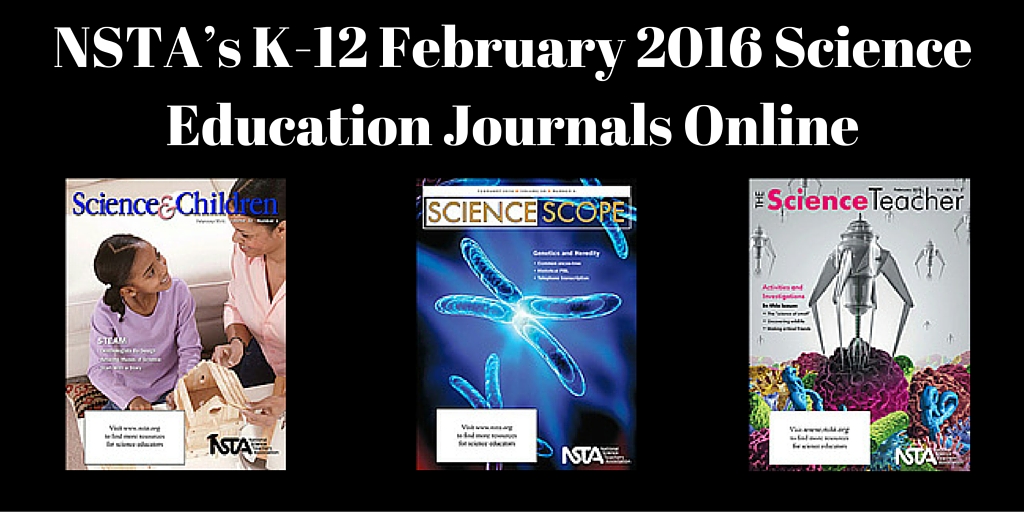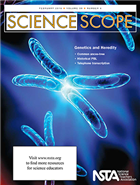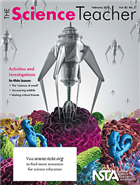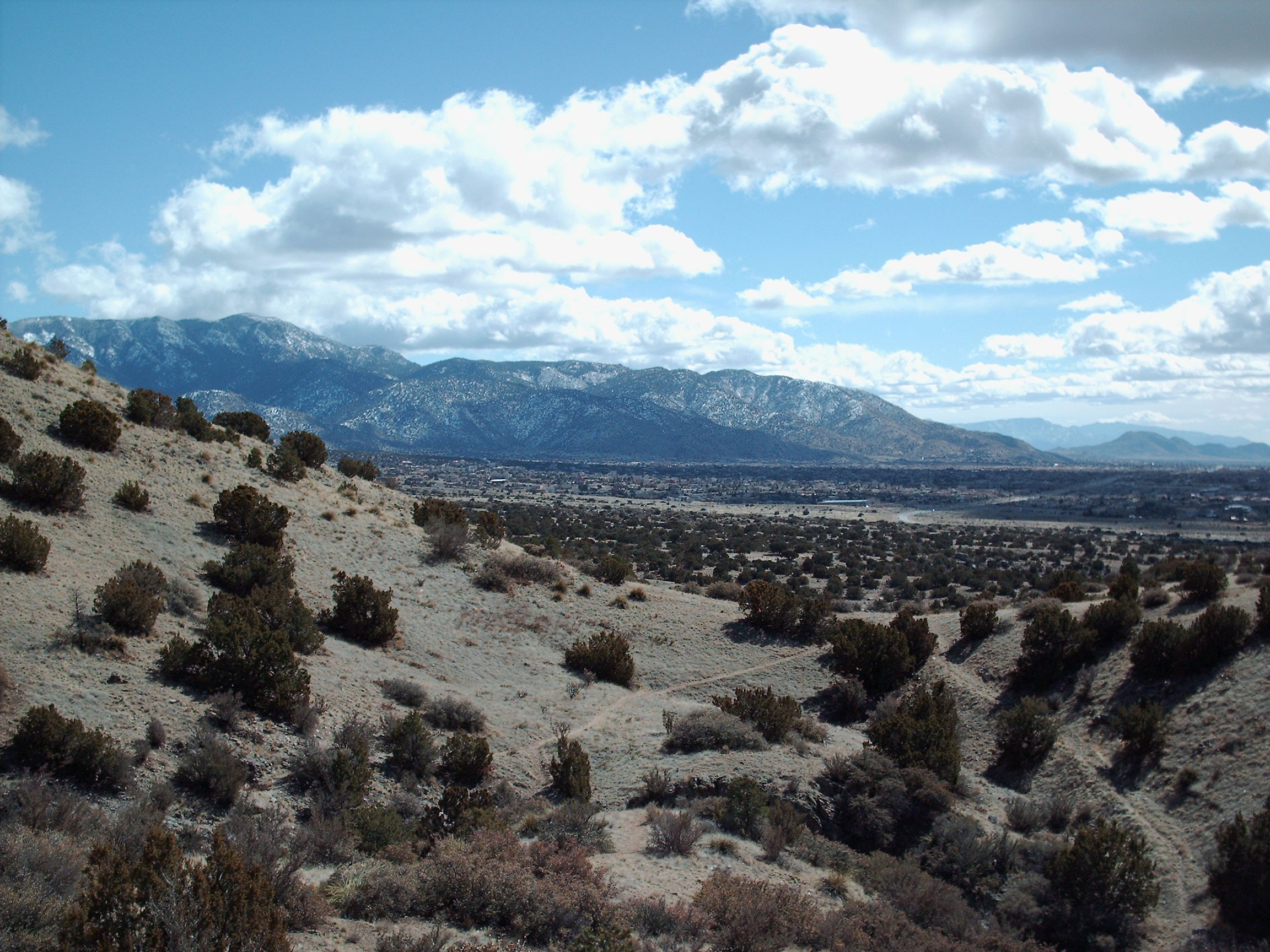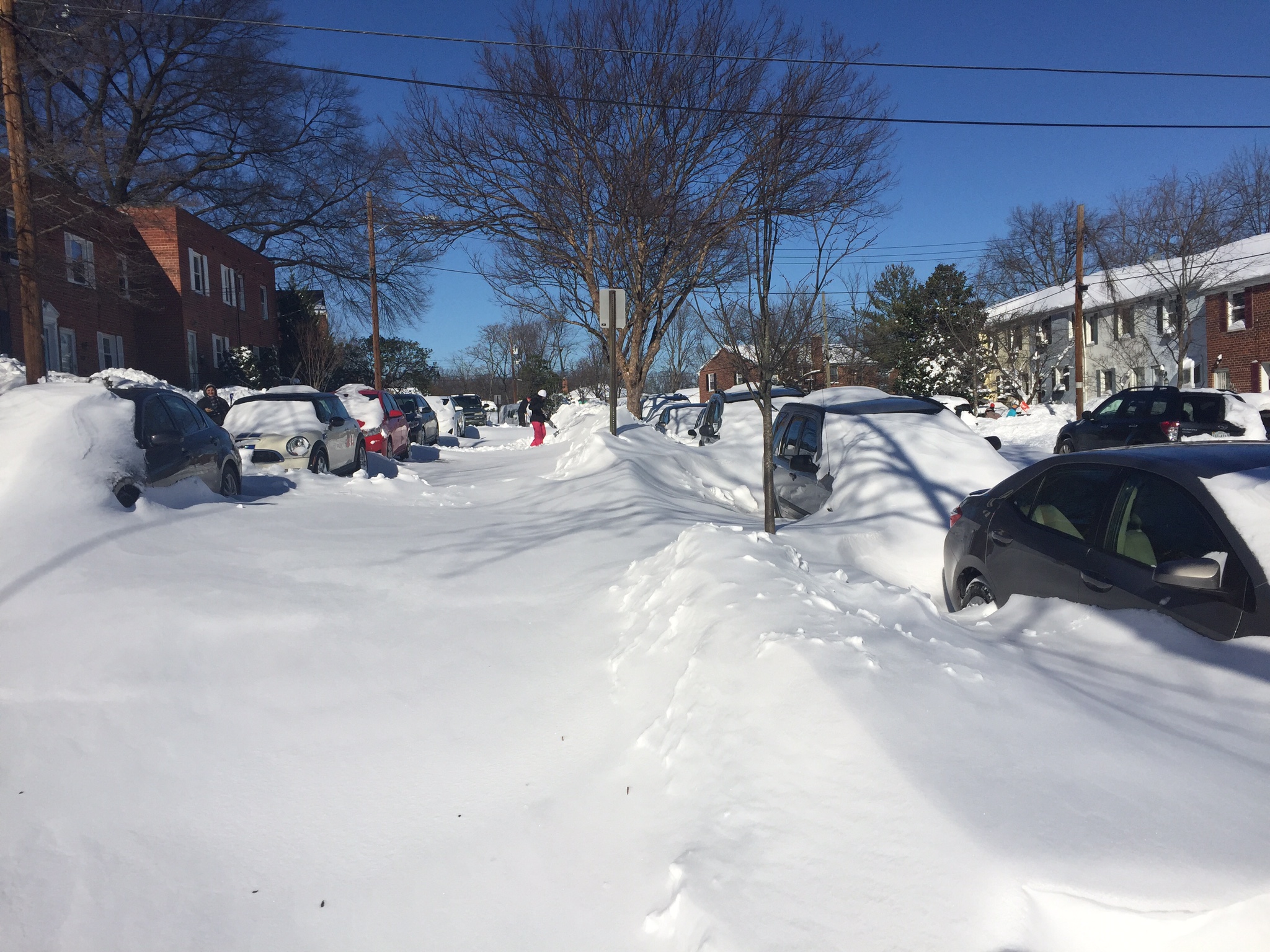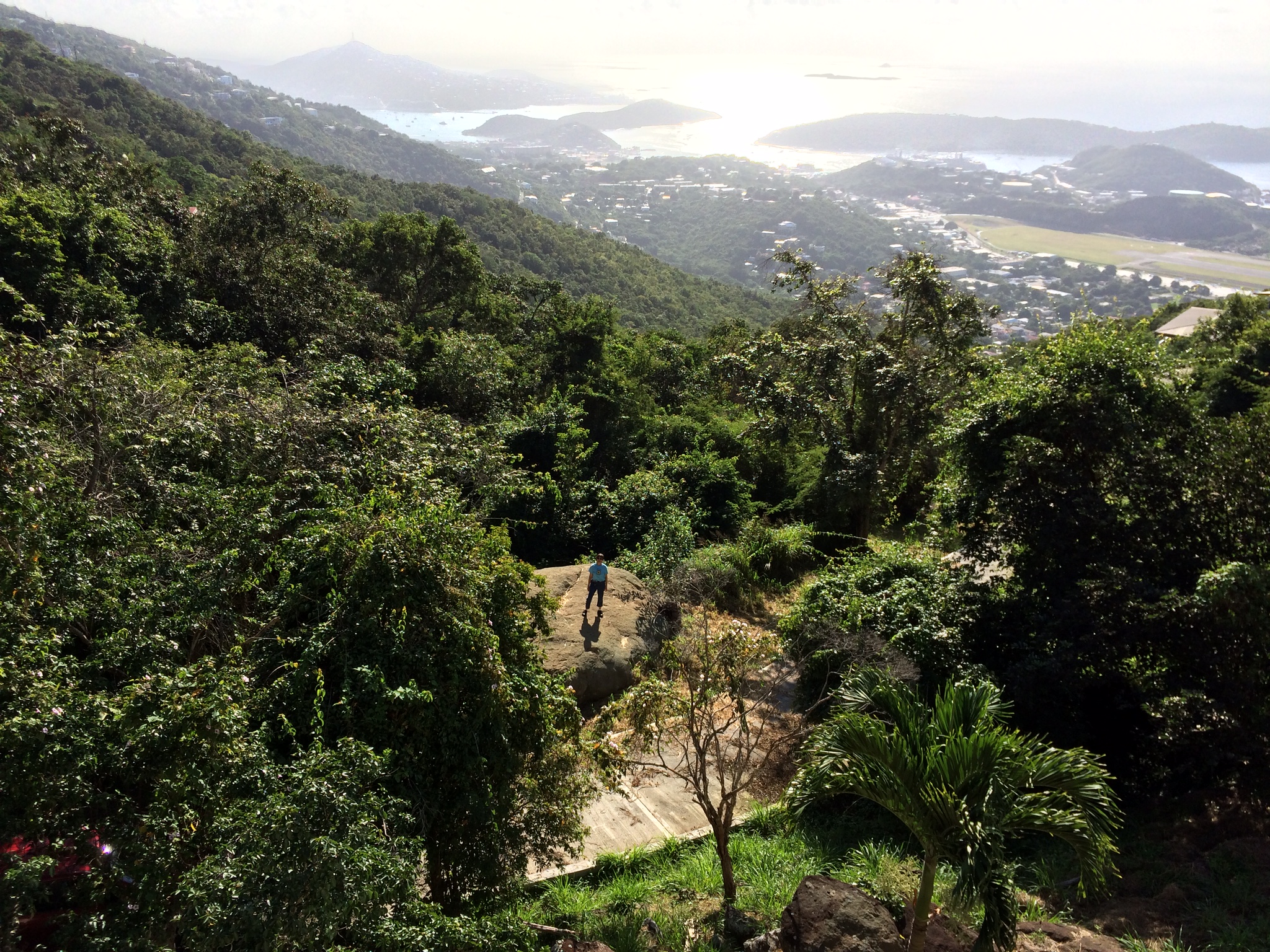Adding More STEM to the School Day
By Debra Shapiro
Posted on 2016-02-02

Middle school students dissect a frog as part of a hands-on lesson from Science from
Scientists, an in-school enrichment program in Massachusetts and California. (Photo by Arturo Martinez)
Schools seeking to enhance students’ learning of science, technology, engineering, and math (STEM) are adopting in-school STEM enrichment programs that reach student populations in need of additional learning opportunities, connect students with scientists, and/or provide more challenging curriculum. One such program, Science from Scientists (SfS), was established in 2002 “to help teachers with challenges in presenting science content,” says Erika Ebbel Angle, SfS founder and executive director. “Some teachers may have taken only one science course, or [find that] students need more science for test preparation,” she observes. “Teachers have told us that the only way to reach all of their students is through an in-school program.”
SfS offers an In-School Module-Based STEM enrichment program that brings two scientists to grades 4–8 classrooms every other week during the school year “to work with teachers and bring content [that supports] the NGSS [Next Generation Science Standards] and MCAS [Massachusetts Comprehensive Assessment System],” explains Angle. Teachers can choose from more than 85 hands-on STEM lessons, and the scientists “bring the necessary materials with them.”
The program aims “to inspire students and improve both attitudes and aptitudes,” she notes. The scientists conduct “pre- and post-assessments every other week” to chart students’ progress, she relates.
“The program succeeds because teachers see us as a great resource to bolster their curriculum and let students interact with scientists as role models,” Angle contends. While SfS “isn’t genderspecific,” it exposes boys and girls to female role models, she notes.
SfS has been adopted by 46 schools in Massachusetts and California, and “many districts seek us out,” she notes. Assessments have shown that “SfS raises standardized test scores by an average of 25% in our partner schools,” she reports.
SfS is provided free to public schools during the first two years. (Privateschools must pay for the entire program.) During year three, public schools start bearing the program’s costs. SfS “can help schools get grants and offers fundraising ideas,” says Angle. The goal for year four is “to have the program be self-funded in districts where we have relationships,” she explains, but SfS can help with funding if a district isn’t able to cover all the costs. “If we have classroom teachers who want us, we are committed,” she maintains.
An Import From Israel
“Twelve years ago, we were looking for out-of-the-box-type science improvement programs for Jewish day schools in the United States,” recalls Judy Lebovits, vice president and director of the Center for Initiatives in Jewish Education (CIJE). CIJE connected with the Israel Center for Excellence through Education to bring the Excellence 2000 (E2K) program to Jewish schools in the United States. Aimed at highly motivated math and science students, the program also has been adopted by several U.S. public schools and implemented in 77 schools nationwide, she reports.
E2K’s 24 modules involve “teaching totally hands-on, cultivating personal excellence, fostering creativity, and learning how to learn,” and appeal to “students who…like to tinker,” she contends. Each module starts with a story and a problem to solve, then students begin to experiment. “The kids come up with the formula on their own…They can take the answer and apply it to other situations,” she observes.
Carmel Academy in Greenwich, Connecticut, uses E2K with gifted sixth and seventh graders. Grades 6–8 science teacher and E2K coach Rhonda Ginsberg says the program “is a chance for students to do pure science” and design their own experiments. Last year, students designed and tested insulation for a polar bear’s cave, for example.
Often E2K students “bring back what they’ve learned to the regular science class,” and Ginsberg says she has “moved some of the E2K material into the regular science class.”
E2K students compete in national and international competitions and have won 10 awards, which “has created excitement around science,” she relates. They compete online with students from 25 other schools in a competition held in Israel. “The scientists in Israel were blown away at how fast my kids answered the questions,” she reports.
Not all gifted students are admitted to E2K. Ginsberg evaluates fifth-grade candidates, meeting with their science and math teachers to determine their “thinking ability,” she explains. Her biggest challenge is “how to say no to a kid who isn’t yet there analytically and to [his or her] parents. It’s tough.”
Kindergarten Enrichment
When the Batavia, Illinois, Public Schools downsized kindergarten classes from full-day to half-day, some parents complained. Seeking a solution, the district contacted the Batavia Park District, which supervises the area’s parks and recreation facilities and activities. The Batavia Park District designed an enrichment program, now in its fourth year, to extend the school day to six-and-a-half hours for kindergarteners whose parents were willing to pay for it. “About one-third of [area] kindergarteners are enrolled in our program,” says Sarah Schneider, kindergarten enrichment teacher for the Batavia Park District.
The program runs in each of the school district’s six elementary schools, with its own classroom and teacher. “In half-day kindergarten, the kids are only able to do core literacy and math; there’s not a lot of time for science and social studies,” Schneider observes. “We have a solid science program to get kids interested in science early on.
“We have a Delta Education [science] curriculum consisting of six different lessons: oceans, trees, insects and spiders, weather, body and senses, and health and nutrition…[S]ome of us also study the rainforest, arctic animals, space, pumpkins, and basic chemical mixtures,” she explains. “[We chose the curriculum] because we didn’t want to teach the same topics taught by the [school district’s teachers] in preschool,” she relates.
“Our kids are very well prepared for first grade because they’re in school for a full day and getting extra content,” she reports. “We don’t worry about [test] scores; we just make sure students are engaged, growing, and getting something positive out of it.” Without the testing, “we’re able to hold smaller classes with more creative projects.”
Schneider notes there is a trend in some districts to return to all-day kindergarten, which would mean the end of the enrichment program. She believes this could be a real loss for students because district teachers “won’t have the flexibility that we do.”
This article originally appeared in the February 2016 issue of NSTA Reports, the member newspaper of the National Science Teachers Association. Each month, NSTA members receive NSTA Reports featuring news on science education, the association, and more. Not a member? Learn how NSTA can help you become the best science teacher you can be.
The mission of NSTA is to promote excellence and innovation in science teaching and learning for all.
Follow NSTA
Prepare Your Students for the August 21 Solar Eclipse with Solar Science
By Carole Hayward
Posted on 2016-02-02
Great extras accompany this book, including safety glasses for viewing the eclipse and an Observer’s Guide to the All-American Total Solar Eclipse.
“On Monday, August 21, 2017, a total eclipse of the Sun will be visible in the continental United States for the first time in almost 40 years. A total eclipse is when the Sun is completely hidden by the Moon, the sky becomes dark, and the Sun’s faint atmosphere (corona) becomes visible—looking like a beautiful halo. This total eclipse will only be visible on a narrow track stretching across the United States from Oregon to South Carolina. No other country will get to see the total eclipse this time.”
To help prepare middle schoolers for an optimum experience of this wondrous event, NSTA Press has published a great resource: Solar Science: Exploring Sunspots, Seasons, Eclipses, and More. This curriculum resource is written specifically to align with the three-dimensional (3D) learning encouraged by the Next Generation Science Standards (NGSS). Its learning experiences engage students in using real data to learn solar science and effectively integrate the Disciplinary Core Ideas (DCIs), Science Practices (SPs), and Crosscutting Concepts (CCC) associated with solar astronomy at the middle school level.
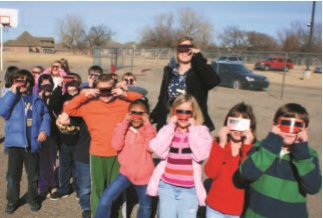 Authors Dennis Schatz and Andrew Fraknoi are award-winning experts in astronomy and science education. Schatz is the Senior Advisor at the Pacific Science Center, and Andrew Fraknoi is the Chair of the Astronomy Department at Foothill College. Both authors regularly lead local and national professional development sessions for teachers at many different levels.
Authors Dennis Schatz and Andrew Fraknoi are award-winning experts in astronomy and science education. Schatz is the Senior Advisor at the Pacific Science Center, and Andrew Fraknoi is the Chair of the Astronomy Department at Foothill College. Both authors regularly lead local and national professional development sessions for teachers at many different levels.
They paired up to write this book because they know there will be tremendous interest in the eclipse and that teachers will want to prepare their students to understand relevant science topics the year before and the year after.
The 45 classroom-tested, hands-on, inquiry-based activities are organized into four sections
- Understanding and Tracking the Daily Motion of the Sun: What does the Sun do in the sky each day, and how does that relate to our notions of time and direction?
- Understanding and Tracking the Annual Motion of the Sun and the Seasons: How does the Sun’s motion and position in the sky vary throughout the year, and how does that relate to our ideas of a calendar and the seasons?
- Solar Activity and Space Weather: What phenomena do we observe on the surface and in the atmosphere of the Sun, and how do these influence what we observe and how we live our lives on Earth?
- The Sun, the Moon, and the Earth Together: Phases, Eclipses, and More: How do the relationships among the Earth, the Moon, and the Sun produce solar and lunar eclipses?
Ideally suited for teachers, informal science educators, youth group leaders, curriculum specialists, and teacher trainers, these versatile activities can be used one at a time, as the basis of a stand-alone unit on the Sun, or as a comprehensive curriculum.
Whether or not you buy a copy of Solar Science, you can download a free observing guide for the upcoming solar eclipse to share with students and their families as well as community partners. This eight-page guide includes everything you need to know regarding where and when to see the eclipse, how to observe the eclipse safely, and how to understand and explain what causes it.
NSTA Press has developed many online extras, including downloadable worksheets and charts to accompany lessons. This book is also available as an e-book.
Great extras accompany this book, including safety glasses for viewing the eclipse and an Observer’s Guide to the All-American Total Solar Eclipse.
NSTA’s K-12 February 2016 Science Education Journals Online
By Korei Martin
Posted on 2016-02-01
Looking to take advantage of the creative approaches that STEAM offers students? Want to explain to your students how traits are passed down from one generation to another? Are your students fascinated with nanoscience? The February K–12 journals from the National Science Teachers Association (NSTA) have the answers you need. Written by science teachers for science teachers, these peer-reviewed journals are targeted to your teaching level and are packed with lesson plans, expert advice, and ideas for using whatever time/space you have available. Browse the February issues; they are online (see below), in members’ mailboxes, and ready to inspire teachers!
The addition of the arts to science, technology, engineering, and math (STEM) adds a new dimension to lessons. As you’ll find in this issue of S&C, STEAM brings forth creative approaches to STEM that will enhance student learning, from brainstorming to communication skills.
Featured articles (please note, only those marked “free” are available to nonmembers without a fee):
- Amazing Muses of Science
- Free – Editor’s Note: STEAM: Beyond the Acronym
- Luminous Lighting
- Ornithologists By Design
- Free – Planning NGSS-Based Instruction: Where Do You Start?
- Start With a Story
- Table of Contents
When looking for information on genetics and heredity, X or Y can mark the spot to start your search. Dig into the activities in this issue to learn more about how traits are passed from one generation to the next. We are sure you will uncover a valuable lesson or two among the trees, peas, and telephone chatter.
Featured articles (please note, only those marked “free” are available to nonmembers without a fee):
- Controversial Environmental Issues Explored Through Interdisciplinary Perspectives: The Case of the Bald Eagle, the Botanical Garden, and the Airport
- Free – Editor’s Roundtable: Teaching Heredity and Evolution in the Next Generation
- From Mendel to Me: Constructing Genetics Knowledge Through Historical Problem-Based Learning
- Pass the DNA, Please
- Free – Planning NGSS-Based Instruction: Where Do You Start?
- Using Local Street Trees to Teach the Concept of Common Ancestry
- Table of Contents
Nanoscience development affects almost every discipline of science, engineering, and technology. Not surprisingly, “the science of small” is also finding its way into science classrooms. In general, nano refers to a billionth of a meter—about 1/50,000 the width of a hair follicle. The term nanoparticle usually refers to small materials with a size of between 1 and 100 nanometers (nm). Because nanoparticles are so small, they have a greater surface-area-to-volume ratio, causing them to be more reactive than larger particles and useful for various applications. Nanoscience is just one of many activities and investigations covered in this issue, which also looks at wildlife cover boards, using socio-scientific issues to teach argumentation, and finding patterns in chemical compounds.
Featured articles (please note, only those marked “free” are available to nonmembers without a fee):
- A Virtuous Cycle
- Free – Editor’s Corner: Write for The Science Teacher
- Making Critical Friends
- Free – Planning NGSS-Based Instruction: Where Do You Start?
- Shedding Light on the “Science of Small”
- Uncovering Wildlife
- Table of Contents
Get these journals in your mailbox as well as your inbox—become an NSTA member!
The mission of NSTA is to promote excellence and innovation in science teaching and learning for all.
Follow NSTA
ECE galore in January 2016 Science and Children!
By Peggy Ashbrook
Posted on 2016-01-31
Writing about my science teaching for early childhood educators means thinking about a potential community that spans geographic distance and different biomes, seasons, cultures, educational backgrounds, ethnicities, and teaching careers, among other differences. How we are the same is in our desire to be a teacher of science who helps all children build their understandings of the natural and human-made world in a developmentally appropriate way.
I strive to think about who and where my words might be read, and be as inclusive as my life experience and education allow me to be, while still reflecting and speaking from my experience. When I write about recording the weather, I try to think about places where typical weather is different from weather in my area, but some times I may neglect to think outside of my experience. Thinking outside our experience is what educators do as we consider how children will connect with new experiences and new vocabulary. Understanding children’s experiences will guide us as we ask children to consider alternative explanations instead of holding onto early misconceptions.
 It is interesting to see the many ideas children have about what is, and what is not, matter as reported in Page Keeley’s column on Formative Assessment Probes, “Uncovering Students’ Concepts of Matter” in the January 2016 issue of Science and Children. Children have many reasons for not including some objects or certain materials in the group “matter,” perhaps because they rarely hear the word used in that context. Keeley encourages primary-grade teachers to “try the probe with their students and make note of the ideas students have, which teachers can re-visit through instruction designed to build a bridge between existing ideas about matter and a scientific concept of matter.” Early childhood educators can ask our children, “What does this kind of matter feel like to you?” when handling all kinds of matter–scooping water or rice in the sensory table, touching the bark of a tree or our own skin, and feeling the wind. (The March 2015 Early Years column, “Getting Messy with Matter,” describes an exploration of how paints of various consistencies–thin water colors to thick tempera–act when painted onto various surfaces such as, paper, foil, felt, and natural materials such as tree branches. Try it with your students and use the word “matter” frequently!)
It is interesting to see the many ideas children have about what is, and what is not, matter as reported in Page Keeley’s column on Formative Assessment Probes, “Uncovering Students’ Concepts of Matter” in the January 2016 issue of Science and Children. Children have many reasons for not including some objects or certain materials in the group “matter,” perhaps because they rarely hear the word used in that context. Keeley encourages primary-grade teachers to “try the probe with their students and make note of the ideas students have, which teachers can re-visit through instruction designed to build a bridge between existing ideas about matter and a scientific concept of matter.” Early childhood educators can ask our children, “What does this kind of matter feel like to you?” when handling all kinds of matter–scooping water or rice in the sensory table, touching the bark of a tree or our own skin, and feeling the wind. (The March 2015 Early Years column, “Getting Messy with Matter,” describes an exploration of how paints of various consistencies–thin water colors to thick tempera–act when painted onto various surfaces such as, paper, foil, felt, and natural materials such as tree branches. Try it with your students and use the word “matter” frequently!)
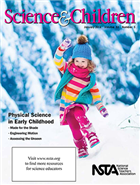 Almost every article in the January 2016 issue is focused on early childhood!
Almost every article in the January 2016 issue is focused on early childhood!
How can early childhood programs teach physics at a developmentally appropriate level? Read the Early Childhood Resources Review column, “Tools for Physical Science Inquiry,” for an overview of the many common early childhood program materials that engage children in learning physical science concepts. (You can recommend favorite resources you use to be reviewed in this column–contact column editor Rosemary Geiken.)
In “How We Know What We Know: Cultivating scientific reasoning among preschool students with cars and ramps,” Joseph B. Robinson says, “Discussing why these scientists revised their stance can teach children about uncertainty, evidence, disagreement, and other topics of vital importance to the world of science.” (Pg 42). “My objective has been to present students with a series of investigations that they can perform with minimal support, while making their own choices about what specific items or conditions they want to study. With this arrangement, my students have found new truths through their memorable endeavors. And, perhaps most importantly, they have begun to understand how scientific methods of investigation help us learn about the world.” (Pgs 42-43). I admire the way he was able to challenge the children’s common misconception that bigger cars are heavier than small cars by including small heavy cars and light big cars.
If you teach in kindergarten or other elementary grades, read about the shift from teaching about science to engaging students in science and engineering practices in “Addressing Three Common Myths About the Next Generation Science Standards” by Kenneth L. Huff. Is this what is happening in your program? Learn more about this shift by reading the article, free to non-members as well as members.
January snowfall and icy conditions in my region kept us out of school for more than a week while snow plow crews tried to find places to put it all so buses could get through residential streets, teachers could find parking spots, and residents could clear their sidewalks. I had to shift a lot of snow but the snow days gave me time to consider how I will shift my teaching.
Writing about my science teaching for early childhood educators means thinking about a potential community that spans geographic distance and different biomes, seasons, cultures, educational backgrounds, ethnicities, and teaching careers, among other differences. How we are the same is in our desire to be a teacher of science who helps all children build their understandings of the natural and human-made world in a developmentally appropriate way.
"Flipped" meetings
By Mary Bigelow
Posted on 2016-01-31
 As the science chairperson, I’d like to change the format of our monthly afterschool meetings. Do you have any ideas what we can do in terms of professional development or other projects? It seems like we don’t get much accomplished with our current format. —C., Virginia
As the science chairperson, I’d like to change the format of our monthly afterschool meetings. Do you have any ideas what we can do in terms of professional development or other projects? It seems like we don’t get much accomplished with our current format. —C., Virginia
Let’s face it—at the end of the day most teachers are tired and concerned with evaluating student work, getting home to their families, heading off to another job or a graduate class, and/or preparing for the next lesson. The after-school time is precious and not something to spend on mundane informational issues or idle chatter.
My experience also included meetings in which we read over information items (deadlines, changes in policy, upcoming events). We complained about situations without coming to any decisions. Some colleagues graded papers or watched the clock. We often left these hour-long contractual meetings with a list of tasks to accomplish individually on our own time (e.g., strategic planning, supply orders, professional development plans). So I’m glad to hear that you want to facilitate something more productive.
For your monthly meetings, send out an agenda via e-mail in advance. The agenda should include an issue to discuss, resolve, or plan for that is important to science teachers or to the district (e.g., lab safety, grading policies, instructional strategies, Next Generation Science Standards topics, technology, inventories, parent communications, assessments). Include information items here so the actual meeting time can be spent on more important issues. Rather than a bulleted list of agenda items for you to address, phrase them in the form of a question for your colleagues to discuss. For example, instead of “Safety,” ask, “What do you do to ensure that students work safely in your lab?” Set aside a few minutes before adjourning to recognize new issues and celebrate any successes or accomplishments.
I’ve also participated in meetings modeled on the “flipped classroom” strategy*…
The meeting participants were given readings to do or video segments to watch prior to the meeting. (The NSTA journals and web resources would be good sources for these.) The real-time meeting then focused on active discussion, decision-making, hands-on experiences, or teacher reflection. Teachers can use the time to work collaboratively on tasks that they would otherwise have to do on their own, rather than taking them home for later.
For example, in the December issue of The Science Teacher, the Science 2.0 column “Did They Really Read It?” addresses how to assess student understanding of a reading assignment or video. The authors also posted a 5-minute video blog entry that demonstrates how the two tools described in the article work. In a flipped meeting or workshop, the participants can read and watch the materials in under 10 minutes beforehand and use the meeting time to explore the options and consider how this would apply to their classes.
Other options:
- Use the meeting time to model strategies that would also apply to the classroom, such as gallery walks, cooperative learning, and technology tools for brainstorming, sharing, and visualizing. For example, I was at a meeting where the chair gave us each an article on a relevant topic. We had a few minutes to read it, and we were directed to highlight three statements that resonated with us or about which we had a question. We shared them via an online tool and then discussed the highlighted issues. The presenter noted that the strategies for critical reading, technology, and think-pair-share could be applied in the classroom.
- Vary the location of the meetings, asking a different teacher each month to “host” the meeting in his/her lab. The host would describe some of the activities that the students do, and the other teachers have a chance to learn more about what happens in other classes.
- Have a combined meeting with another department to discuss common interests or questions or conduct a virtual meeting with Skype to interact with a scientist, museum curator, or other resource person.
You may run into some resistance from teachers who are used to the status quo. Being expected to participate in discussions or group activities may take some getting used to on their part, and you might have to prepare some discussion-starters at first. If meetings in previous years were seen as a waste of time, you’ll have to be persistent to show people that things are going to be different.
*I’ve created an NSTA resource collection with several articles on flipped meetings.
 As the science chairperson, I’d like to change the format of our monthly afterschool meetings. Do you have any ideas what we can do in terms of professional development or other projects? It seems like we don’t get much accomplished with our current format. —C., Virginia
As the science chairperson, I’d like to change the format of our monthly afterschool meetings. Do you have any ideas what we can do in terms of professional development or other projects? It seems like we don’t get much accomplished with our current format. —C., Virginia
Zika, @neiltyson, and flick picks from POTUS: Twitter tales for science teachers
By Lauren Jonas, NSTA Assistant Executive Director
Posted on 2016-01-30
You can’t believe everything you see in social media, but when something’s popular on Twitter/Facebook/Snapchat, it’s sure to be something you can use to catch students’ attention. The stories that caught our eye this week run the gamut from truly frightening to beautifully inspirational. Spoiler alert… Neil deGrasse Tyson is NOT the astrophysicist with the biggest Twitter following!
Why is a 50-year old disease just gaining notoriety in the U.S.?
An infectious disease specialist explains all you need to know about Zika virus https://t.co/1rb29MDjet pic.twitter.com/2bSVj0tNpw
— Huffington Post (@HuffingtonPost) January 30, 2016
Richard Feynman was the best teacher Bill Gates never had.
The Feynman lectures are essential reading for anyone seeking an introduction to physics: https://t.co/bNTGoxZ1um pic.twitter.com/R1kTZox8G9
— Bill Gates (@BillGates) January 27, 2016
Among the secrets only Science Friday could reveal: Bathroom reading of Antarctic explorers!
Next up: This meteorite hunter rocks. Meet @marsninja!
Listen at https://t.co/47pZYEf2oR #SciFriLive pic.twitter.com/Y8893wYG1J
— Science Friday (@scifri) January 29, 2016
Free AI info from Science… for a limited time only…
Our special section on artificial intelligence is free to read for the next 2 weeks: https://t.co/gpBPQJNWM8 #TBT pic.twitter.com/GSjug3z6C8
— Science Magazine (@sciencemagazine) January 28, 2016
Yup, POTUS loves our favorite movie line, too.
.@POTUS‘s favorite movie of the year?
Hint: He loves saying “science the heck out of this thing” #YouTubeAsksObama https://t.co/l33F3fPl1h— The White House (@WhiteHouse) January 15, 2016
Why did Scott Kelly join tumblr from space?
Just joined @Tumblr from space! #Blizzard2016 inspired 1st post: Chasing Storms https://t.co/MlSuel3pfU #YearInSpace pic.twitter.com/kPEAfs07IW
— Scott Kelly (@StationCDRKelly) January 25, 2016
How do you become an NGSS superhero? NSTA member Kathy Renfrew has the answer.
Curious about #NGSS but haven’t jumpd off the edge yet? How about a cape & colorful tights? https://t.co/6Ftvzms0l0 pic.twitter.com/LCeqPwh2UE
— MiddleWeb (@middleweb) January 29, 2016
The astrophysicist with the biggest Twitter following is…
In case anybody was wondering, the Astrophysicist with the highest twitter following is @JimmyFallon pic.twitter.com/EHacfMr7hr
— Neil deGrasse Tyson (@neiltyson) January 13, 2016
The mission of NSTA is to promote excellence and innovation in science teaching and learning for all. Follow @NSTA on Twitter to see more stories like these and get the science education resources you need.
You can’t believe everything you see in social media, but when something’s popular on Twitter/Facebook/Snapchat, it’s sure to be something you can use to catch students’ attention. The stories that caught our eye this week run the gamut from truly frightening to beautifully inspirational. Spoiler alert… Neil deGrasse Tyson is NOT the astrophysicist with the biggest Twitter following!
Ideas and information from NSTA's January K-12 journals
By Mary Bigelow
Posted on 2016-01-26
All three journals this month include the article Addressing Three Common Myths About the Next Generation Science Standards – another must-read article that applies to all grade levels and science subjects.
 Science and Children – Physical Science in Early Childhood
Science and Children – Physical Science in Early Childhood
Our youngest students are inquisitive about the physical world – gravity, matter, weather, motion, the solar system, sound, light… Here are suggestions for building on their natural curiosity and their questions about the world around them.
- Made for the Shade has a 5E lesson in which students create shelters to protect “lizards” from harmful UV radiation.
- How We Know What We Know uses cars and ramps to challenge what evidence students can gather to support their conclusions.
- Engineering Motion includes suggestions for students to make and test car models and communicate their results.
- Assessing the Unseen combines students’ interests in music and literature
- Seeing the Solar System Through Two Perspectives connects
- Teaching Through Trade Books: You Light Up My Life has two lessons to investigate materials that are translucent, transparent, opaque, and reflective.
- The Early Years: Blowing Bubbles can be an introduction to many science concepts and practices.
- Formative Assessment Probes: Uncovering Students’ Concept of Matter helps you to find out what students do (or do not) know about this concept.
- Engineering Encounters: A House for Chase the Dog has a 5E lesson in which students study the characteristics of materials in order to protect a pet from the weather.
For more on the content that provides a context for these projects and strategies see the SciLinks websites for Colors, Forces and Motions, Light, Matter, Pinhole Images, Properties of Matter, Reflection, Reptiles, Sound, States of Matter, UV Index, Vibration.
Continue for Science Scope and The Science Teacher.
Science Scope – Ecology and Biology
- A Biomedical Engineering Twist to Science
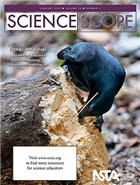 Fairs has suggestions for an engineering fair as an alternative to traditional science fairs. There are ideas for both competitive and in-class fairs with a focus on medical problems/inventions.
Fairs has suggestions for an engineering fair as an alternative to traditional science fairs. There are ideas for both competitive and in-class fairs with a focus on medical problems/inventions. - Modeling Ecosystems has a lesson for going beyond models as replicates of objects (e.g., the cell) to the use of models to explain and predict phenomena
- Outbreak! Cells, Pathogens, and Disease uses a 5E lesson to help students explore the science behind global outbreaks of diseases.
- Eco-Choices: Understanding the Complex Consequences of Local Decisions describes a simulation that could be used as an introduction or an assessment. Students explore how their decisions affect an ecosystem and design solutions to real-life problems.
- Tried and True: Bird-Brained Foraging: Learn to Eat Like a Crow has another approach to connecting living things to their food chains.
- Engaging Students With Dynamic Models: Peruvian Food Chain Jenga shows how a common game can be repurposed into a model, in this case a model of marine-based food chains.
For more on the content that provides a context for these projects and strategies see the SciLinks websites for Bacteria, Biomedical Engineer, Cell Features, Cell Growth, Disease, Ecosystems, Food Webs, Habitats and Niches, Marine Ecosystems, Microbes, Modern Epidemics, Pathogens, Watersheds.
The Career of the Month: Agricultural Engineer in The Science Teacher could also fit with this month’s theme.
 The Science Teacher – Constructing Explanations and Designing Solutions
The Science Teacher – Constructing Explanations and Designing Solutions
“Science is all about asking questions and constructing explanations, while engineering focuses on defining problems and designing solutions. I think of science as the quest for timeless truths and engineering as the search for design solutions rooted in a particular time and situation… Science and engineering work hand in hand to understand and address major challenges confronting our world…” TST Field Editor Steve Metz
- Don’t “Short Circuit” Stem Instruction has ideas for using electric circuits to learn about science and engineering practices.
- How Do Siamese Cats Get Their Color? asks students to connect genes, proteins, and traits to explain and model the phenomenon.
- Salamander Saver illustrates how students can participate in design projects with real-world applications
- Assessment as Learning explores the idea of assessment as learning, where students learn, collaborate, and self-correct during the assessment, using the separation of mixtures as a context.
- Science 2.0: Do I Need a Robot? describes connecting with students via a “telepresence.”
- The Green Room: Hurricanes and Humans provides timely information on severe storms in an El Niño year.
- Idea Bank: Secrets of the “Sunspots” address misconceptions about sunlight and eclipses, using pinhole cameras and geometry.
For more on the content that provides a context for these projects and strategies see the SciLinks websites for Chromatography, Distillation, Dominant and Recessive Traits, Eclipses, El Niño, Electric Circuits, Genetics, Hurricanes, Lakes and Ponds, Pinhole Images, Proteins, Protein/ Enzymes, Robots, Salamanders.
Check out the Teach Engineering site for more lessons that integrate science and engineering in real-life scenarios.
All three journals this month include the article Addressing Three Common Myths About the Next Generation Science Standards – another must-read article that applies to all grade levels and science subjects.
Teacher Professional Learning: Transforming Teacher Practice
By Guest Blogger
Posted on 2016-01-25
I encourage STEM educators (and administrators) across the U.S. to read and understand Science Teachers’ Learning: Enhancing Opportunities, Creating Supportive Contexts, a terrific report just released by the National Academies of Science (NAS), Engineering and Medicine.
The National Academy report illuminates practical recommendations and lays out the supportive environment and professional learning experiences teachers need and which are critical to the enactment and application of the three-dimensional teaching and learning espoused in A Framework for K–12 Science Education and the Next Generation Science Standards (NGSS).
With laser-like focus, this report hits the mark, targeting its conclusions and recommendations at the level where education change is most critical, and placing the emphasis on enhancing teacher practice through professional learning situated within the context of their schools and districts.
School leaders will greatly benefit from the 13 conclusions and 7 recommendations outlined in this report (more below). Another must read is NSTA’s statement on the NGSS which can help science teachers to secure much-needed funding for the professional learning activities called for in the NAS report.
Moving to a New Vision of Science Teaching and Learning—Content and Pedagogy are Critical
A seismic shift is occurring in how science should be taught, moving away from the recall, recognition, and regurgitation of science facts, and shifting toward actively engaging students in exploring and making sense of science phenomenon and engineering solutions in the world in which they live. The NAS report first and foremost recommends a focus on facilitating the principles espoused in A Framework for K–12 Science Education and the NGSS, which succinctly suggests: Deeper and more flexible student learning of the Disciplinary Core Ideas (DCI) of science occurs through three-dimensional teaching and learning that engages students in authentic Science and Engineering Practices as they solve and investigate real world, locally relevant/interesting problems and science phenomenon, recognizing Crosscutting Concepts such as patterns, cause and effect, systems and system models, etc., which ultimately facilitate coherence and connections across concepts, solutions, and science disciplines.
As outlined in the NAS report, here are a few of the key areas where it is critically important that teachers receive support, and suggestions on how NSTA can help:
- Teachers must understand specific science content areas they are charged to teach (especially at the elementary level)
NSTA Connection: We have 25 self-directed teacher web modules, called SciPacks, focused on the disciplinary core ideas of science. They provide subject matter support for educators in science concepts such Force and Motion, Cell Structure and Function, and the Earth’s Changing Surface. Each module also contains a pedagogical-implications component that culls the science education research and provides a context for how to facilitate teaching the science phenomenon, identifying promising pedagogical strategies, known student preconceptions, and what is cognitively appropriate to teach by grade band. A 5E inquiry model embeds quizzes, simulations, animations, and hands-on activities that let teachers engage, explore, explain, elaborate, and evaluate their understanding of the DCIs through an optional final assessment. These SciPacks are also available as enhanced e-books, accessible via our NSTA e-reader application, making them available offline via tablets on iPad and Android operating systems.
- Teachers must see examples and gain practice in modeling new instructional strategies
NSTA Connection: NSTA hosts NGSS web seminars and virtual conferences on the NGSS and STEM, focusing on the science and engineering practices and district-based case studies on integrated STEM, with archives accessible after each live event. Lead by leading experts, administrators, and practitioners in the field, these are excellent resources to scaffold professional learning discourse and learning at local school and district levels. Examples and strategies applicable for specific content and grade bands are shared, and asynchronous discourse is also available online via the NSTA Learning Center–moderated NGSS and STEM community forums. NSTA also maintains a robust presence on all major social media platforms (e.g., twitter, Facebook, etc.), including our blogs and discussion forums, accessible via our social media dashboard.
- Teachers must have access to curriculum materials that are aligned and consistent with the desired shifts in practice
NSTA Connection:
NSTA Publications have a plethora of award-winning, best-in-class books, e-books, journals, and newsletters aligned with the ideals and strategies espoused in the NGSS. The book titles enumerated below demonstrate the breadth and depth of our offerings, all available via the NSTA Store:- Discover the NGSS enhanced e-book
- Integrating Engineering and Sci
ence in Your Classroom - Student Lab Manual for Argument-Driven Inquiry in Biology: Lab Investigations for Grades 9–12, or for Life Science in Grades 6–8.
- Picture-Perfect Science Lessons: Using Children’s Books to Guide Inquiry, grades 3–6
- Uncovering Student Ideas in Science: 25 Formative Assessment Probes
- The NSTA Quick-Reference Guide to the NGSS, K–12
Administrators charged with helping educators achieve the vision of the new science standards will want to check out NSTA’s Introducing Teachers and Administrators to the NGSS: A Professional Development Facilitator’s Guide. This book provides classroom case studies of instructional approaches for students challenged by traditional science teaching, and covers curricular decisions involving course mapping, designing essential questions and performance assessments, and using the NGSS to plan units of instruction.
NSTA also has enlisted 55 expert curators who are searching for and vetting lessons, activities, simulations, models, and other type of materials that might be used for instruction and meeting the new standards. For a list of curated NGSS resources, you may review over 200 resources at our NGSS@NSTA Hub. The Hub has become a central source for science educators to locate professional learning, materials and resources to work towards the vision of the NGSS and Framework.
NSTA also formally collaborates with more than 180 districts and universities across the country, helping them implement their strategic goals and course offerings in support of the NGSS and STEM, both at the in-service and pre-service levels. Our NSTA Learning Center platform may be configured to enhance local onsite efforts with private cohorts and administrator dashboards to help document teacher growth as users create and complete long-term professional growth plans catering to their unique needs and district and school strategic plans.
Watch for my next blog where I will discuss more of the NAS report and outline additional methods teachers and administrators can consider for professional growth.
If you’d like to learn more about the partnerships or products listed above, please feel free to contact me at abyers@nsta.org or 703-312-9294, or Flavio Mendez, Senior Director of the NSTA Learning Center at fmendez@nsta.org or 703-312-9250.
 Al Byers, Ph.D., is the Associate Executive Director, Services for the National Science Teachers Association
Al Byers, Ph.D., is the Associate Executive Director, Services for the National Science Teachers Association
The mission of NSTA is to promote excellence and innovation in science teaching and learning for all.
Future NSTA Conferences
2016 National Conference
NGSS Workshops
2016 STEM Forum & Expo
2016 Area Conferences
Follow NSTA



